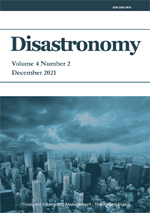Analyzing China's International Rescue Capabilities through the Türkiye Earthquake
- 위기관리 이론과 실천
- Disastronomy
- Vol.6 No.2
-
2023.1233 - 46 (14 pages)
- 0

In addition to mutual cooperation between neighboring regions, cross-border (inter-regional) international relief can be effective in the event of a major disaster or accident. According to the Charter of the United Nations, one of the purposes of the United Nations is to promote international cooperation to solve international problems that belong to the nature of international economic, social, cultural and human welfare. For the first time in human history, international aid was embodied because the United Nations helped rebuild the post-war region through international cooperation for the first time on the European continent, which has been devastated since World War II. In modern society, the international community relies on the coordination of the United Nations to provide humanitarian relief (UN) in emergencies caused by natural or man-made disasters in areas beyond the independent capacity of national authorities. The 6 February 2023 earthquake in Turkey killed 59,259 people, 297 missing and 121,704 injured in the region, including Turkey and Syria, one of the strongest earthquakes experienced in at least a century. In this international relief operation, China participated in the post-disaster international relief operation with a total of 440 people, including Chinese rescue teams, ram rescue teams, and blue sky rescue teams. This article will help optimize China's international relief capabilities by analyzing the current status and structural capabilities of China's international relief capabilities (government + private) and structural action processes in the event of a Turkish earthquake.
Ⅰ. Introduction
Ⅱ. The Purpose of Research
Ⅲ. Previous Research
Ⅳ. Problems and Improvement of International Relief
Ⅴ. Implication
References
(0)
(0)